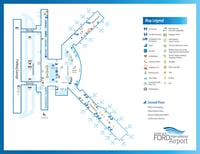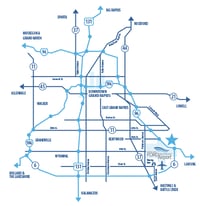Environmental Commitment: PFAS
PFAS Impact
Data-Driven Process
Collaboration
Timeline
Overview
The Gerald R. Ford International Airport (GFIA) deeply values its place in this community, with the health and safety of those who use the airport paramount to our service priority. We take enormous pride in connecting individuals and families to destinations worldwide; in 2021 GFIA helped nearly three million passengers achieve their travel goals while contributing more than $3 billion in economic activity in the West Michigan region. While the COVID-19 pandemic and Delta variant brought unprecedented challenges to global travel in 2020-2021, we remain optimistic about the future.
GFIA’s success is directly related to its strong commitment to collaborative, innovative solutions in all that we do. This includes our ongoing environmental work in investigating PFAS (per-and poly-fluoroalkyl substances) on Airport property. PFAS are a group of thousands of man-made chemical compounds that have been used since in the 1940s in a wide variety of consumer and commercial products, including certain firefighting foams used around the world to help ensure the safety of the traveling public.
FAQs
The U.S. Environmental Protection Agency (EPA) defines Per- and polyfluoroalkyl substances (PFAS) as a large group of man-made chemicals that are resistant to heat, water, and oil. PFAS have been classified by the EPA as an emerging contaminant on the national landscape. For decades, they have been used in many industrial applications and consumer products. PFAS are distinguished in part by a chain of connected fluorine and carbon atoms that form the strongest bond in chemistry. They are still used today. PFAS have been found at low levels both in the environment and in blood samples of the general U.S. population. For more information on PFAS, please visit: https://www.epa.gov/pfas.
Learning about PFAS and their potential impacts has become an evolving national conversation. According to the U.S. Environmental Protection Agency, PFAS are used in many different formulations, including certain firefighting foams. The use of firefighting materials known as AFFF, or aqueous film-forming foam, is mandated by the Federal Aviation Administration (FAA) at all commercial airports across the country. Currently, all of the FAA-approved AFFF formulations contain some amount of PFAS that ensures that AFFF will extinguish petroleum-related fires quickly and prevent reignition.
GFIA continues its commitment to learning about the potential for PFAS on airport property, including the testing of soil from the former firefighter training area and the testing of groundwater and stormwater on airport property. Consistent with past tests of both soil and water, the GFIA is continuing to use a stepwise approach and making decisions based on data from earlier tests. Current testing is being coordinated with the Michigan Department of Environment, Great Lakes and Energy (EGLE) and the Michigan Department of Transportation (MDOT). The airport supports the City of Grand Rapids and Cascade Township pursuits for state funding to provide domestic water service to residents northeast of the airport.
For air transportation safety, the FAA requires airports like GFIA to use AFFF containing PFAS because of its effectiveness in extinguishing jet-fuel fires. The GFIA took proactive steps by voluntarily moving to an AFFF product that is asserted to have less environmental risk.
However, all FAA required AFFF products still contain some form of PFAS.
GFIA has been actively engaged in a multi-phase evaluation process to assess the potential impacts from historical AFFF use, with the results from each phase guiding subsequent steps. Please see the timeline below.
GFIA has already implemented measures to limit the use of AFFF containing PFAS moving forward. At this time, AFFF will only be discharged under emergency circumstances. Measures in place at this time include: eliminating foam discharges for required training, transitioning to an FAA allowed AFFF product containing PFAS compounds that are currently understood to have the lowest risk, implementing an “ECOLOGIC” system that eliminates AFFF discharge for required equipment calibration, and updating post-emergency response plans to include timely containment, collection, and disposal of AFFF containing PFAS in the event of an aircraft fire emergency.
GFIA was part of collaborative efforts that supported Cascade Township and the City of Grand Rapids’ pursuit of funding sources for municipal water supply in the area, including a $5 million grant from EGLE.
In the interim, active GFIA site investigation efforts and industry research continue to understand all potential PFAS sources.
Furthermore, GFIA staff remains engaged with the greater airport industry and is pursuing opportunities for research grants related to AFFF impacts at airports.
PFAS and its Impacts at Airports
Learning about PFAS and how to respond to any related impacts at airports has become an evolving state and national conversation (FAA, EPA, etc.), including growing concern over the potential health effects from these chemicals, primarily through PFAS-impacted drinking water.
The Federal Aviation Administration (FAA) has long mandated that commercial service airports, including the Ford International Airport, use Class B firefighting foams that contain PFAS, known as aqueous film-forming foams (AFFF), due to their ability to extinguish petroleum-based fires quickly and effectively. State public-use air carrier airport licenses also require compliance with these federal requirements, which are applicable to all commercial service airports. In 2016, the Environmental Protection Agency (EPA) developed its first-ever Lifetime Health Advisories for PFOA and PFOS - EPA Health Advisories and EPA Fact Sheet.
Michigan & PFAS Investigative Sites
There are over 220 sites in Michigan currently identified as PFAS investigative sites, including the Ford International Airport and 18 other airports, according to the Michigan Department of Environment, Great Lakes and Energy (EGLE).
.jpg)
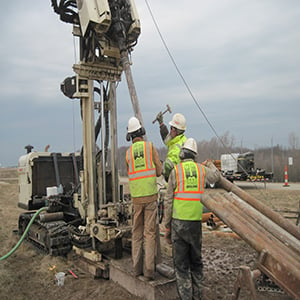
.jpg)

Data-Driven Process
GFIA, working with its environmental engineering consultant, LimnoTech, has conducted a multi-phase evaluation process to assess the potential impacts of historical AFFF usage on Airport property, with the results from each phase guiding subsequent investigative actions. This process, which continues through today, includes testing groundwater, soil, and stormwater on Airport property and residential drinking water wells immediately downgradient of the Airport. It also includes modifying our practices regarding the specific type of AFFF used, employing new technologies approved by FAA to eliminate any AFFF test spraying, and employing due care practices to manage any contaminated materials that we discover.
To date, more than 370 samples have been collected, with the findings from each step of the process guiding future investigative efforts, see timeline below. As part of our commitment to collaboration, all of our efforts have been coordinated with state and local agencies, including EGLE (formerly known as the Michigan Department of Environmental Quality) the Michigan Department of Health and Human Services (MDHHS), the Kent County Health Department (KCHD) and Cascade Township.

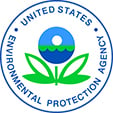
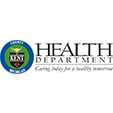

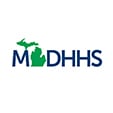

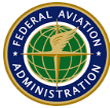

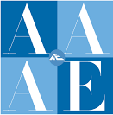









Collaboration
GFIA values its collaborative approach working with federal, state, and local groups, associations and entities in our efforts. Our work includes engagement with:
- Michigan Department of Environment, Great Lakes, and Energy (EGLE; formerly the Michigan Department of Environmental Quality or MDEQ)
- Michigan Department of Health and Human Services
- Michigan Department of Transportation – Office of Aeronautics
- Michigan PFAS Action Response Team (MPART)
Timeline
2016
The US Environmental Protection Agency established health advisories for PFOA and PFOS.
2017
The National Academy of Sciences, Airport Cooperative Research Program published Report 173 “Use and Potential Impacts of AFFF Containing PFASs at Airports” as a primer for U.S. airports.APRIL/MAY 2018
GFIAA began its data-driven, multi-phase investigation process, coordinated a work plan for EGLE approval, and began sampling.
JUNE 2018
GFIAA shared its initial groundwater test results with those results indicating PFAS levels less than the State of Michigan cleanup criteria established for groundwater, as protection for drinking water. The results were shared with EGLE, the KCHD, the MDHHS, and the community. Although the groundwater test results were within acceptable regulatory levels, GFIAA chose to go above and beyond to conduct additional testing of off-site residential wells. See press release here.
SEPTEMBER 2018
Results of the residential well testing indicated the drinking water at the properties all showed non-detect for PFOA and PFOS, the two PFAS compounds that comprise the basis for EPA Lifetime Health Advisories. Based on the data and results, the KCHD concurred that there was no need for GFIAA to continue additional residential testing. See press release here.
OCTOBER 2018
GFIAA submitted Phase 2 groundwater and soils investigation findings to EGLE showing that reported concentrations generally decreased the further away or deeper samples were collected.
Additionally, groundwater was encountered 70-100 feet below the surface. The 60+ feet of clay between the surface and groundwater prevents downward migration. Results supported a finding that there was, "...no likelihood of a transport pathway from [the former FireFighter Training Area] offsite or to any surface waters."
EARLY 2019
EGLE conducted an independent geological review which concluded that PFAS found in groundwater beneath the former FireFighting Training Area (FFTA) does not appear to be related to former training activities. EGLE continued to explore possible PFAS sources beyond Airport property.
EGLE also completed testing of surface waters in the vicinity of the airport, with all results below established criteria.
EGLE began a multi-phase analysis of residential drinking water wells beyond the 28 residential wells tested by the Airport Authority.
SUMMER 2019
Based on data collected to date, surface water and soil work plans were approved by EGLE and executed by the Airport Authority, contributing additional data to the overall conceptual site model. All data were summarized and reported to EGLE.
OCTOBER 2019
EGLE and Airport Authority team members concurred on a sampling and analysis plan for phase 3 investigation activities based on all data to date. Phase 3 sampling began with a focus on upgradient deep groundwater analysis and possible historic migration pathways.
EARLY 2020
Short-Term Stormwater Characterization and Phase 3 investigation data were summarized and submitted to EGLE. Findings were consistent with prior investigations showing a significant clay layer with PFAS values decreasing with depth and distance from the FFTA.
SPRING 2020
Amid the COVID-19 pandemic, GFIAA was one of several Michigan airports to apply for grant funding from the Michigan Department of Transportation - Office of Aeronautics.
The grant work plan recommended the continuation of soil and shallow groundwater testing at several locations on Airport property, including the FFTA. This data will advance the overall conceptual site model.
SUMMER/FALL 2020
GFIAA was awarded a grant from the Michigan Department of Transportation (MDOT) to conduct on-site testing.
EGLE and MDOT reviewed and approved a modified work plan with sampling currently underway.
AUGUST 2020
The State of Michigan adopted new regulations limiting seven PFAS chemicals in municipal drinking water. The new drinking water standards also update Michigan’s existing groundwater cleanup criteria of 70 ppt for PFOS and PFOA.
Following the promulgation of new criteria, EGLE concluded that 39 drinking water wells sampled by EGLE in the off-airport, Cascade Township Residential Well investigation exceed the new state criteria. The KCHD has offered water filtration to residents with PFAS detections.
OCTOBER 2020
GFIAA works with Cascade Township and the City of Grand Rapids to identify funding sources for municipal water supply in the area.
NOVEMBER 2020
MDOT grant-funded drilling and sampling activities began to further delineate the extent and distribution of historical impacts.
MARCH 2021
EGLE Geologic Review Part 2 published.
APRIL 2021
MDOT Grant Investigation – Round 1 data delivered by Airport Authority to inform Round 2 work.
JUNE 2021
MDOT Grant Investigation – Round 2 MDOT and EGLE approval received with sample collection started.
JUNE 2021
EGLE awards the City of Grand Rapids a grant to extend municipal water supply in the Trout Creek residential area of Cascade Township.
JULY 2021
GFIAA submitted an Environmental Pilot Program pre-application to the FAA with private industry and public university partners. The pilot program would implement new technology to study mitigation of PFAS impacts in site soils.
OCTOBER 2021
FAA, which mandates use of AFFF, issued updated deadline, considerations to approve PFAS-free AFFF for Certified Airports: FAA Cert Alert 21-05.
JANUARY 2022
MDOT Grant Investigation - Round 2 data delivered by Airport Authority to MDOT.
MARCH 2022
GFIAA and the City of Grand Rapids enter into an agreement to utilize MEDC grant funds to further extend municipal water supply in the Trout Creek residential area of Cascade Township.
APRIL 2022
GFIAA applied for EGLE Testing and Monitoring Grant with recommendations for additional monitoring wells and soil borings to support the step-wise, data-driven investigation.
JUNE 2022
Representative Meijer announces federal Water Resources Development Act funding to further extend municipal water supply in the Trout Creek residential area of Cascade Township.
AUGUST 2022
FAA awards an Environmental Mitigation Pilot Program grant to GFIAA to investigate application of a novel technology to mitigate PFAS impacts in shallow site soils. Partners for this project include CDM Smith, Michigan State University, and MDOT.
OCTOBER 2022
EGLE awards GFIAA a Testing and Monitoring Grant to continue PFAS investigation on and off Airport property; plans included soil borings in the Trout Creek Neighborhood, monitoring well installation near former lagoons on Airport property, and surface water sampling at several locations where water leaves Airport property.
DECEMBER 2022
FAA Pilot Program began at GFIAA, one of two PFAS mitigation study grants awarded by the FAA and ongoing in the U.S. The purpose of the Pilot Program at GFIAA is to identify a novel technology for stabilizing PFAS in soil.
Soil and groundwater sample collection began for EGLE-awarded Testing and Monitoring Grant on and off Airport property.
JANUARY 2023
FAA issues update on PFAS-free foam for Part 139 certified airports; maintains that certified airports should continue using AFFF until the FAA approves issuance of the new foam.
MARCH - JUNE 2023
Continued sampling under Testing and Monitoring Grant on Airport property, including wet and dry weather surface water. Installed monitoring wells for soil and groundwater collection sampling at the former lagoons.
APRIL 2023
GFIAA collaborates with Cascade Township, agreeing to reimburse Township for temporary drinking water relief as part of ongoing watermain extension efforts to extend drinking water supply to 400+ homes over multiple phases.
MAY 2023
Congress imposes May 6, 2023 deadline for FAA, in coordination with DoD and EPA, to develop transition plan for Part 139 airports to PFAS-free foam.
JULY 2023
Short-Term Stormwater Characterization Study report submitted to EGLE as part of Testing and Monitoring Grant.
SEPTEMBER 2023
FAA issued Part 139 Cert Alert 23-07; includes the first Fluorine-Free Foam made available to commercial airports in the U.S.
FALL 2023
Initial FAA Pilot Program bench testing results are expected, which will inform next steps for research for stabilizing PFAS in soils.
SPRING 2024
GFIAA plans to implement soil stabilization technologies resulting from the FAA Pilot Program.
Michigan Environmental Cleanup Law,
Part 201, Environmental Remediation
GFIA continues to manage PFAS impacts to its property associated with its past mandatory use of AFFF, according to the requirements of Part 201 of Michigan’s Natural Resources and Environmental Protection Act. As a public entity, GFIA remains committed to our community and ongoing environmental stewardship.
Resources
- Airports Council International - North America - Executive Level PFAS Overview
- Michigan Department of Environment, Great Lakes & Energy (EGLE): https://www.michigan.gov/egle/
- Environmental Protection Agency (EPA) PFAS page: www.epa.gov/pfas
- Airport Cooperative Research Report 173: Published report
- Interstate Technology Regulatory Council: https://www.itrcweb.org/
- Federal Aviation Administration (FAA): https://www.faa.gov/

